Siberian Husky
Siberian Husky Facts
- Breed Type: Purebred
- Size: Medium
- Lifespan: 12 – 15 years
- Temperament: Alert, Friendly, Gentle, Intelligent, Outgoing
- Colors: Agouti, Black, Black and Tan, Black and White, Brown, Copper, Grey, Piebald, Red, Sable, Silver, Splash, White
- Hypoallergenic: No
- Related Dog Breeds:
- Alaskan Malamute
- Siberian Husky
- Samoyed
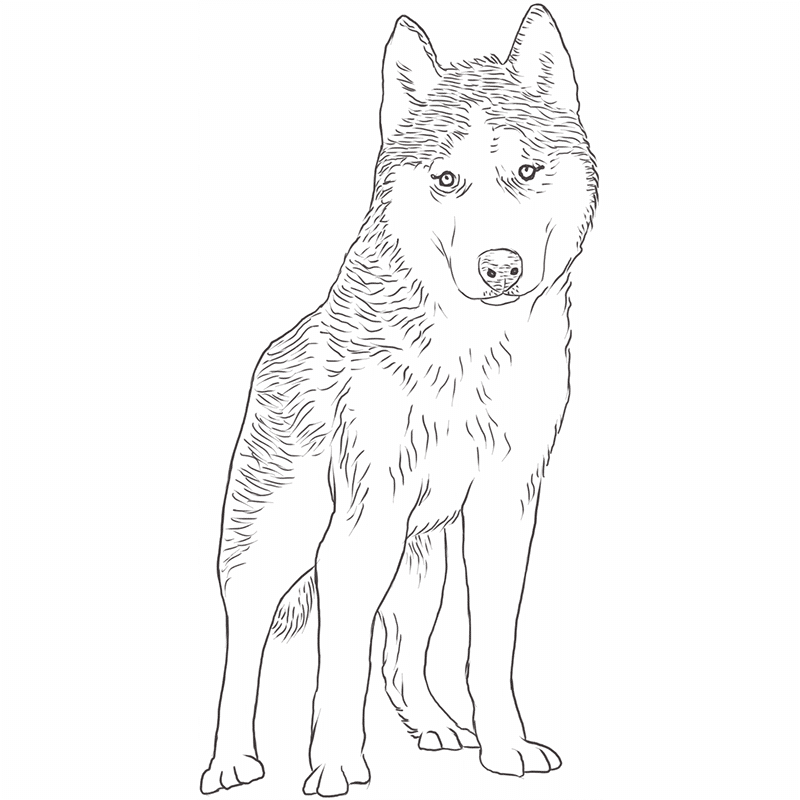
Siberian Huskies have increased in popularity since everybody went insane for Game of Thrones. Not good. Why? First: Direwolves aren’t even Huskies, people! Second: The Husky dog breed needs specialized care and many people simply cannot manage. So now there is a huge increase in abandoned Huskies.
This is a very sad and cruel situation that can be avoided.
We strongly urge beg you to do your homework before bringing a Husky home!
You’re off to a good start, but keep reading, because there are many things you need to know about Huskies.
(hint: they are too much dog for most people)
![Siberian Husky Dog Breed Information [INFOGRAPHIC]](https://dogbreedslist.com/wp-content/uploads/2019/05/Siberian-Husky-Dog-Breed-Information-Infographic.jpg)
History
The Siberian Husky origin story begins with the Chukchi tribe in…you guessed it…Siberia (a Russian province encompassing most of Northern Asia).
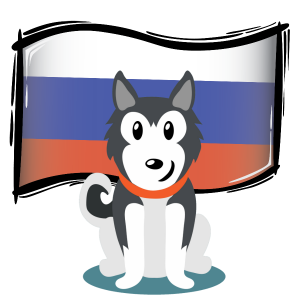
They were bred to pull loaded sleds but were also family companion dogs.
The first Huskies to land in America were imported to Nome, Alaska. Breeding of Siberian Huskies started in earnest after a heroic trek running 674 miles (1,085 km) in 127 and a half hours to fetch diphtheria serum.
The breed was officially recognized by the American Kennel Club (AKC) in 1930. The first standard was published in the AKC Gazette in April 1932.
Are Siberian Huskies Good Family Dogs?
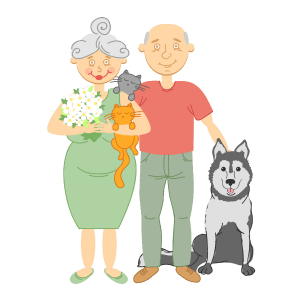
Huskies are good family dogs for the right household.
Huskies are social pack animals and they like being around people and other dogs. That’s why they are excellent for large families with kids.
Husky size isn’t as big as most people think and they usually stop growing around 18-36 months. But still, they are best suited for homes with a big, fenced yard. Husky apartment life is challenging, but doable. And remember:
A bored Husky quickly becomes a destructive Husky.
Destructive, like home-wrecking Husky, or cat-killing Husky.
Even the best Husky toys can’t keep your pup entertained forever, so this breed isn’t the best fit for being left at home alone all day while you’re at work.
Huskies are great for active families because they are working dogs that need 1-1.5 hours of exercise a day.
Care
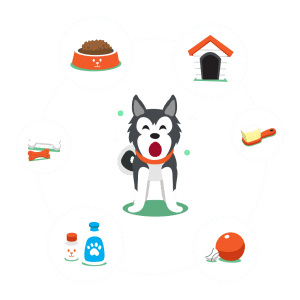
To care for a Husky puppy, follow the general principles of puppy care:
- Brush his teeth. Your pup is teething, so this will feel good on his gums and help him get used to having your fingers in his mouth.
- Trim his nails and play with his feet.
- Check the ears regularly for signs of irritation or infection.
Caring for an adult Siberian Husky is another story altogether and requires a lot of dedication.
You have been warned!
Normal care involves at least nutrition, grooming, exercise, training, and health.
Oh, and lots of love and affection.
PS: Huskies love cuddles!
Remember that un-spayed female Huskies will go into heat and her needs will change during that time.
Nutrition
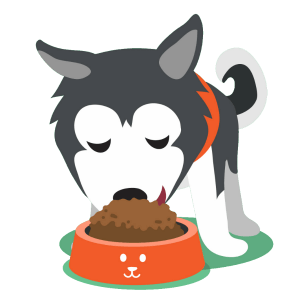
Huskies have been bred as working dogs, not house pets.
Because of that, their dietary needs are very specific as to the composition of protein, fat, and complex carbohydrates. The best dog food for Huskies should have a real, named meat (lamb, for example) as the 1st ingredient.
As much as possible, you should model your Husky’s nutrition after what he might eat in the wild or what you might eat on your table.
Feed your Husky apples because they are nutritious and clean his teeth.
Do not let your Husky drink milk and never let your Husky eat grapes.
The amount of food to give is determined by exercise level and timing, age, and general health.
And if your Husky does not eat, relax.
He is not hungry.
Huskies notoriously experience “food boredom”.
Get worried if it lasts for more than 2 days or if it stops drinking as well.
Grooming

Siberian Huskies shed.
I repeat:
Siberian Huskies shed.
After they shed their puppy coat, here’s what you can expect:
Twice a year in volumes when they “blow” their coats. Otherwise, continuously throughout the year.
Grooming a Husky must consist of brushing at least once a week to prevent matting.
Do not clip or shave or remove the undercoat.
Bathing, not more than a couple of times per year.
Exercise

Huskies need lots and lots and lots of exercise.
(They were bred to work, after all.)
You need to exercise them vigorously, every day.
Dog sports or sledding is excellent. Huskies have webbed feet and love water (but aren’t the best swimmers).
Mental stimulation is necessary as well for this intelligent and inventive dog.
Training
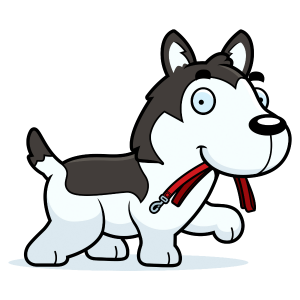
Siberian Huskies are relatively easy to potty train.
Compared to other dog breeds, that is.
Untrained Huskies will become the top dog in your home.
That means it will take your place as leader of the pack. They need to be taught from puppyhood what is allowed and what not.
Professional obedience training classes are recommended over home training because Huskies are very strong-willed.
Translation: Huskies are not the easiest dog breed to train, especially if you’ve never done it before.
You need to know what you are doing or suffer the (very frustrating) consequences.
Siberian Husky Health Issues
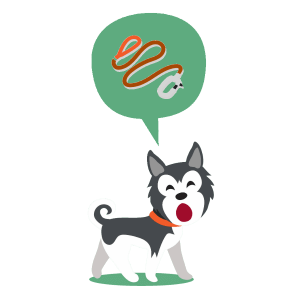
Siberian Huskies are generally healthy dog breeds. They have an average lifespan of 12-15 years.
Simple tips for keeping your dog healthy are recommended vaccinations, daily exercise, and high quality dog food.
The risks for the inherited diseases and other conditions listed below are higher in Huskies than other dogs.
- Hip dysplasia
- Juvenile cataracts
- Corneal dystrophy
- Progressive Retinal Atrophy
- Dental disease
- Bacterial and viral infections
- Obesity (in dogs it’s a disease)
- Von Willebrand’s Disease (a blood clotting disorder)
- Primary or Idiopathic Epilepsy
- Laryngeal Paralysis
- High blood pressure
- Inflammatory bowel disease
- Degenerative Myelopathy (similar to Lou Gehrig’s Disease in people)
- Pemphigus Foliaceus (a superficial skin disease)
- Zinc-Responsive Dermatosis
- Hypothyroidism
Siberian Husky Facts and Information
1. The #1 Thing to Know: Huskies are Working Dogs
Siberian Huskies were bred to be working dogs.
In other words, they have a ton of energy, are not playmates, substitute children, guard dogs, or ornaments.
Siberian Huskies are not good watch dogs and they are at their best if they have a physical job.
Here’s a job you may not have been thinking of: Huskies make excellent service dogs.
2. Huskies Must RUN, Every Day!
Huskies are champion sled dogs. It has been in their blood for centuries.
They must get an hour to an hour and a half exercise a day.
They need running at least a couple of times a week. If you cannot provide that, your Husky is going to develop behavioral problems.
You can not catch a Husky running at full speed, so it is very easy for them to run away. They are very inquisitive and will fly off in pursuit of an interesting smell or some prey…
…more about this later!
3. Besides Running, They Must Have Even More Exercise
The Husky’s need for exercise cannot be overemphasized.
They must, must get exercised every single day. And it must be robust exercise.
It is not impossible to keep a Husky in an apartment. But…
You are going to spend a lot of time outside of this apartment if you want to keep your dog happy and healthy.
Which is what we all want to do, right?
The best home for a Husky is a place with a large, fenced yard where it can keep itself busy running around.
And digging.
4. They Love to Dig and Dig and Dig
Siberian Huskies are diggers, particularly in warm weather, because they like to create a cool hollow to lie down in.
They can dig up yards and flower gardens in no time at all.
Giving the dog a specific place to dig in the yard is only sometimes successful. They dig all over, including inside the house.
5. Digging Skills = Escape Artists
The big yard and lots of room do not mean that your Husky will not escape and wander off to explore the neighborhood. They are accomplished diggers and it is a very simple matter for them to dig underneath fences.
Voila! Gone! Your Husky has just run away.
Recommendations to escape Husky-proof your yard are:
- A fence that’s at least six feet high (but eight feet is better).
- Solidly built – wire mesh just provides them with footing.
- With wire or concrete barriers below the ground.
Huskies can jump fences that are not high enough, break tie-out chains, slip collars, and find many other ways to escape.
And once they have escaped, they can become lost or injured very easily. With heartbreaking results. :-(
6. They are Playful and Need Companionship
Having said that Huskies are not primarily a playmate, they are actually very playful and need another dog or a human to play with.
If not, they become bored, and bored dogs try to amuse themselves in ways that to you will seem destructive.
Obsessional digging is one of the symptoms of a bored dog.
They do not cling to their owners, but when they are well cared for and happy, they are wonderful companion dogs. Husky love is real and many owners testify to that end with many videos and posts.
7. They Can Wreck a House Inside
A Husky doesn’t know the difference between playing with a toy and playing with your Persian Carpet.
They will dig inside as much, if not more, than they do outside.
Their feet and nails are capable of tearing through almost any material in your house, including drywall.
If that isn’t enough, they can chew anything to shreds.
Furniture, electric cables, mobile phones, linoleum, you name it, nothing is safe from them. It is very amusing to scroll through the photos and videos of Husky house damage – not at all so funny when it is your stuff.
And remember, as soon as you replace the ruined items the Huskies will do it all over again.
8. And a Car
Leaving your Husky in the car is a risky business.
If you stay away too long it will happily rip up the seats and the interior upholstery.
Seatbelts are spaghetti to a Husky.
9. They do Not Make Good Guard Dogs
Huskies are pack animals, not loners. It is not in their nature to guard and if you try to train them like that, you are doing the dog and yourself a disservice.
It is territorial and will defend its boundaries (physical or psychological) if it feels threatened. But it would much rather make friends.
Most owners will joke that Huskies will welcome the burglar into your home instead of chasing him away!
10. They are Not Aggressive
The reason why Huskies are not good guard dogs lies in their amicable nature as well as the fact that they are not naturally aggressive.
Siberian Huskies are sociable and get along well with most other animals and people.
They are very good with children and live in peace with other dogs, especially if they were raised together. (Even so, it is never a good idea to leave young children alone with any dog, rather be safe than sorry.)
That does not mean that they will never show aggression. The following can make a Husky (or any dog, really) resort to protective or aggressive behavior:
- Fear
- Uncertainty about its surroundings
- Uncertainty about an owner’s expectations
- Pain, and
- Overstimulation
This is the definition of dog aggression:
“An adapted effort to establish control (physical or mental) over a vital resource or situation that cannot be controlled (from the dog’s perspective) through another means”.
In other words, somehow it has been driven into a corner, whether physically or emotionally.
11. They Don’t Bark (Much), but They Howl
Another reason why Huskies don’t make good guard dogs is that they do not alert bark. On the other hand, they are excellent and enthusiastic howlers.
Leave it for too long – and it differs from dog to dog how long they can stand being left – and your Husky will howl like a banshee.
Not very good for your popularity.
They usually will start howling whenever they feel neglected. Unfortunately, they sometimes start howling for no obvious reasons.
Bedamned if you can shut them up!
It becomes even worse when there are more than one of them around – music to your ears, but not to everybody else’s!
12. They Jump Up on People
Siberian Huskies are friendly, curious, want to play, love people, get excited when you or anybody else arrives at home – so they jump up.
Puppies are cute and get rewarded with love and attention when they jump.
Well done!
You have now taught the dog that jumping is acceptable and a great way of getting attention. They will keep on jumping even when they are huge grownup dogs. Unless you teach them otherwise right from the start and don’t waiver in enforcing the rule not to jump.
There are techniques to stop your dog from jumping. Hitting, kneeing, squirting stuff into their eyes, hanging them by their collars (people who do that should not be keeping any dogs at all) are not part of it.
And teach your guests to interact with your dog on your terms. Otherwise, your guests can sabotage your teaching in no time.
13. Pulling on a Leash or Tether…
Is second nature.
Perhaps some primitive memory is stirred that makes them think the leash is a sled harness and now it is time to pull!!
More seriously, they can bite through a leash with one bite.
Though not aggressive, Husky bite force is…well, a force to be reckoned with, so take care and watch them when you are walking.
They are also very strong and can pull you off your feet without any effort.
14. They Have No Street Sense
For such an intelligent dog, Huskies have an astonishing lack of street sense.
Letting a Husky off his leash whether on purpose or by accident, almost always leads to disaster. They do not realize that traffic will not stop for them.
Tragedy results.
15. Their Middle Name is Stubborn
Huskies are intelligent and curious. They are independent and strong-willed.
So, just like people, these traits can make them stubborn. It can make it very challenging to teach and train them.
Never, ever, beat or strike a Husky that does not do what you want it to, or does something you do not want. This will only make it worse.
Do not underestimate the time, patience, skill, and determination it takes to train a Husky.
If you cannot sustain the effort, do not get a Husky. There are already too many of them in shelters due to optimistic, uninformed owners who give up on them.
16. The Husky Stare
Part of the charm of Huskies is their beautiful blue eyes (this is why Huskies have blue eyes, by the way).
Or one blue and one brown eye.
Or two brown eyes.
Or one color, then change colors.
Or…well, you get the picture. No matter their eye color(s), they really know how to use it!
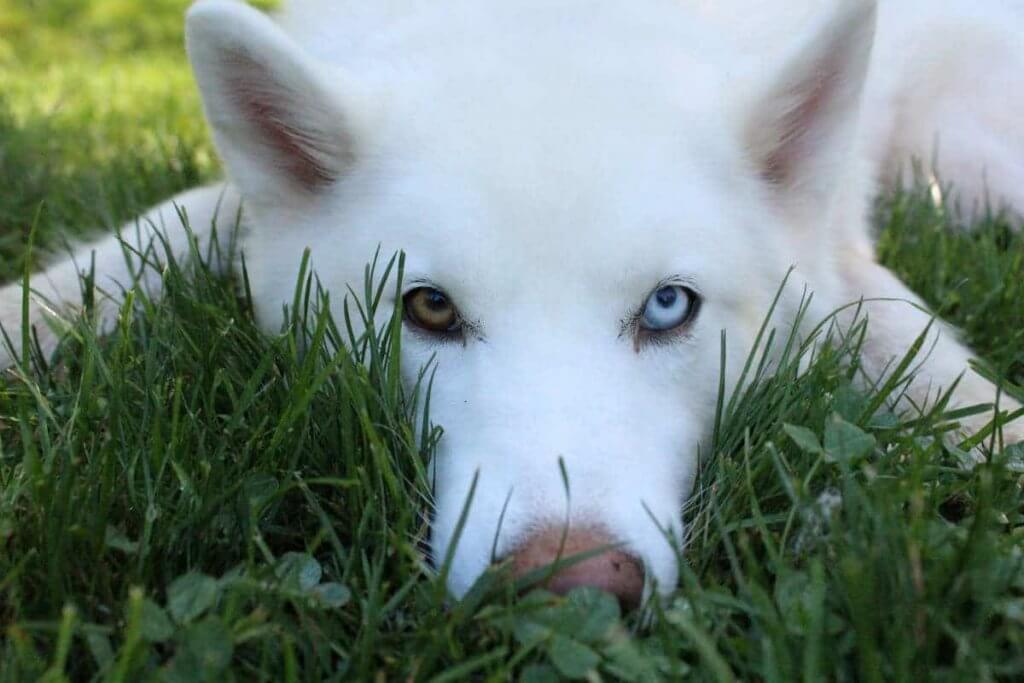
Too often they will respond to your commands and invitations (Come, Boy!) with the Husky stare. They turn those uncanny eyes on you and stare as though you have turned into something small and foul-smelling.
If you let that intimidate you, you have lost. They are number one.
Stare back and affirm your leadership!
17. They Need a Number One Pack Leader – You!
Siberian Huskies have been bred to work with a leader. Some individual dogs can only ever be the pack leader.
A leader dog is very intelligent, runs without needing other dogs to follow, and understands a string of human commands. They belong in a sledding setup where their talent and personality can come into its own.
These dogs are not common, so when you obtain a dog, make sure that it is trained from puppyhood to know that you are the leader. If you do not, you will understand why Huskies have a reputation of being “difficult to train”.
It’s because they think they are the leader.
Do not ask the dog to do something, tell him!
Your leadership must be clear and consistent (refer to why dogs become aggressive). Training and obedience classes are the best options to help you achieve this.
That said, there are owners who say that these dogs are very well able to distinguish the difference between class and home, and behave accordingly. “Good dog!” in class, and deaf dog at home!
The truth is simple – either you make the decisions or they will!
Consequently, Huskies fit best with experienced dog owners who are confident, set rules firmly, and are consistent in their treatment of the dog.
Remember that the dog sees your family as its pack. Be careful to train the dog to recognize who the human leaders are (you, your partner). It must obey commands from everyone in the family who is capable and sufficiently responsible to be giving it.
Otherwise, when you are absent the rest of the family is stuck with an unruly, disobedient, nuisance dog.
A final word on the pack issue.
Once a Husky has accepted you and your family as its pack, it can become so loyal that it becomes jealous will not allow anybody else near you. Experienced owners will know how to deal with it. If you do not, get help.
18. Small Animals are Prey, Not Friends
Now we have established that Huskies are friendly non-fighters it is time to mention, not to anybody.
They are predators who used to hunt for their food and so they will chase.
Accounts of pet cats, canaries, and hamsters who disappeared down the family Husky’s throat abound. This is also the reason why they should not be taken off leash in any public space – they will chase squirrels, birds, and other small animals and kill them.
Yes, kill.
19. Food – Good Rather than Plentiful
Huskies eat a lot less than most other dogs.
Their metabolism can get the most calories possible out of their food. But then it must be quality food.
The main requirements for Husky dog food:
- Must be high in protein.
- More fat than usual.
- Very little grains.
There are formulas for the exact proportions of these nutrients and it is very important that you feed them correctly.
Cheap, low quality food will result in severe health problems and the dog may even stop eating. Your low food bill will be more than offset by your hefty vet bill. A fat Husky is almost unnatural, but feed them too well and don’t exercise, and they can become obese.
20. Cold is Much Better than Hot
Well, duh!!
They are snow dogs!
They come from Siberia!
They work as sled dogs!
Siberian Huskies originated, were developed, and work, in cold climates. Huskies can handle temperatures as cold as -75 degrees Fahrenheit (-60 degrees Celsius).
Talk about freeeeezing!
Everything about this dog tells you they are going to suffer in the heat. They may even become dangerously ill.
If you want a Husky, but live somewhere hot, provide plenty of shade outside and have effective air-conditioning inside.
During the summer, exercise your dog early in the morning or late in the evening to prevent heat exhaustion.
The Husky’s only defense against the heat is to throw off that very effective winter coat. This leads to the next important thing you must know and accept about Huskies…
21. They Shed
Siberian Huskies have a very dense, plush coat with lots of undercoat. It stands to reason that they can shed a lot, especially in warm climates and seasons.
Normally they would spend a week or more shedding very heavily, twice in a year. In warmer areas, the shedding will continue for three weeks.
Even when they are not shedding, you need to brush your dog at least every day (yes, every day). You need to vacuum frequently to remove the clumps of fur that fall out all over the place.
In spite of all the cleaning be prepared to have everything in your house full of hair.
If you can’t keep up you will have to take the dog to be groomed. You will need to groom more frequently during shedding than otherwise.
22. They Live a Long Time
Fourteen years or more is par for the course for a Husky’s lifespan. They are with you for a good chunk of your life.
It’s a long time to live with ripped furniture, hairy clothing, and a backyard worthy of prison.
And no landscaping.
And no “me time”.
23. Huskies and Wolves and Malamutes, oh My!
Contrary to popular belief, a Husky is not a wolf.
Nor is a Husky an Alaskan Malamute.
Oh, and there’s another Husky breed: the Alaskan Husky. They’re not the same, either.
24. And Ultimately, Huskies Talk
Huskies have unequaled vocalization abilities and they are no shy to share it – both via talking or tantrum.
Yep, Huskies throw tantrums.
Watch the videos and listen carefully.
Can you stand this every day for fourteen years?
Enough
That should be enough to either make you more interested in bringing a Siberian Husky home…or to put you off for good.
Go hug a Husky!
Oh, and Pin or share this graphic with your friends or family who are dead-set on bringing a Husky home. That way, you can say “I told ya so!”

Related Reading
Siberian Husky FAQ
No. Friendly, gentle, and outgoing describe a Husky’s temperament. Any dog breed can be dangerous at any time, so always exercise caution when approaching a new dog.
Yes. Siberian Huskies are intelligent. They belong to the Working Group, so they are required to learn jobs quickly.
Huskies are great pets for the right household. Siberian Huskies are champion sled dogs who need 1-1.5 hours of exercise per day and do best when assigned a job.
An Agouti Husky has a very rare coloring on his coat that’s more likely of a working/racing Husky. The hairs have a brindle look, with multiple colors found within the coat. The faces and tails are darker than other Huskies. The lighter markings on an Agouti will be creamy rather than the more typical bright white hue.